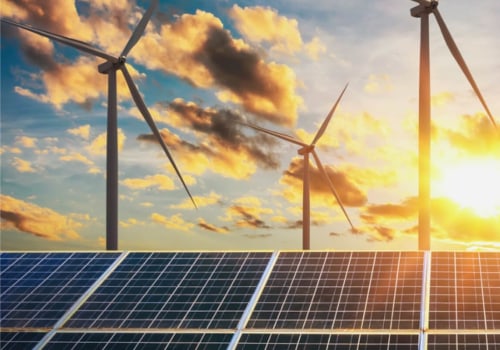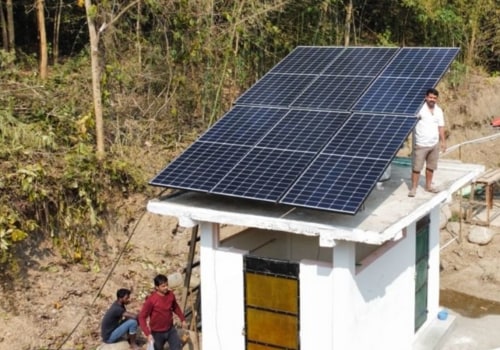Advantages of Solar Energy · Solar Energy is a Proven Technology. Home solar energy is more affordable than ever. The history of photovoltaic (PV) solar energy began with scientific experimentation in the late 19th century. The first silicon photovoltaic cell capable of converting energy from the sun into energy that could operate electrical equipment was introduced in 1954 and, in 1983, global photovoltaic production exceeded 21 megawatts.
There are currently 47.1 gigawatts of total solar capacity installed in the U.S. UU. Across the country, so it's safe to say that solar energy is a proven technology and its adoption as a clean energy source will continue. This great benefit of solar panels is quite simple: when you install solar energy in your home, you generate your own electricity, you rely less on your electricity company and reduce your monthly electricity bill.
Typically, a solar panel system has a lifespan of 25 to 35 years, which means you can reduce your electricity costs for decades by using solar energy. In addition, the cost of solar energy has fallen by more than 70 percent in the last decade, the cost of electricity has increased by about five percent, and the trend of rising electricity costs is expected to continue. Solar Power Can Help You Gain Control in the Face of These Rising Costs. Use this instant estimation tool to get a personalized estimate of your long-term electricity bill savings and review personalized projections of upfront costs and 20-year solar energy savings.
Another concern is that solar energy can occupy a significant amount of land and cause land degradation or habitat loss for wildlife. While solar photovoltaic systems can be attached to existing structures, larger utility scale photovoltaic systems may require 3.5 to 10 acres per megawatt and CSP installations require between 4 and 16.5 acres per megawatt. However, the impact can be reduced by placing facilities in low-quality areas or along existing transport and transmission corridors. The largest solar park in the United States is known as the Star Solar Park near Rosamond, California.
The power plant consists of two separate installations called Solar Star-1 and Solar Star-2, with respective capacities of 314MW and 265MW. Like the plant in India, the location was selected due to its high sun exposure and minimal rainfall. Most states (38 in total, plus DC, American Samoa, U.S. Virgin Islands, and Puerto Rico) now offer net metering, which allows you to make money by returning power to the grid.
Under this policy, the electricity authority gives you credit for the excess electricity you generate through your solar system but that you don't use. Solar panels are made with the latest photovoltaic (PV) technology and are very durable and will last a long time. They can withstand hail, snow, and other adverse weather conditions and typically last up to 25 to 35 years. Solar energy is far from being tried and untested: this technology dates back to the end of the 19th century.
It's been used extensively for decades to provide power to homes and businesses, so you can be sure it's a reliable and versatile power source. The United States now has a total solar photovoltaic capacity of more than 100 gigawatts. This is enough to supply more than 12 million American homes. Earth's known coal reserves are projected to be depleted by 2060, so we won't be able to rely on coal-powered electricity much longer.
To move into the future, we need to seek energy that is sustainable in the long term without harming our natural ecosystems. The environmental benefits of solar energy are undeniable, but they are being widely adopted because it saves solar owners money. It is important to weigh these potential negative impacts on the environment with the ecological benefits of using solar energy. As global solar capacity continues to increase, nations such as Japan and other global leaders in solar energy technology are focusing on developing adequate energy storage to address this problem.
By demystifying complicated topics ranging from mortgage products to stroller options, he hopes to give readers more confidence in his next steps. By the time you consider solar panels, other equipment, and installation costs, you're probably looking to pay tens of thousands of dollars. The argument for the average American homeowner to install solar panels for their home is now better than ever, as the benefits far outweigh the drawbacks. There are also leasing options available for those who want to test solar panels but don't want to buy them yet.
Its greenhouse gas emissions are inconsequential, since the technology does not require any fuel combustion. According to a report by the North Carolina Clean Energy Technology Center, supported by the SunShot Initiative, a fully funded solar photovoltaic system costs less than energy purchased from a local utility from a residential customer in 42 of the 50 largest cities in the United States. While more hours of direct sun exposure will help a solar system generate more electricity, modern panels are quite efficient and can still generate power in low-light situations. While solar panels are the best way to use solar energy to power your home, there are other ways to use solar energy that have a lower barrier to entry.
You should install solar panels if you are looking for a way to save on long-term energy costs. However, assuming that the challenge of proper disposal is met, the reduction in greenhouse gas emissions offered by solar energy makes it an attractive alternative to fossil fuels. The disadvantages of solar energy include a high upfront cost, the inability to work on all roof types, and it can be difficult to find a local installer depending on where you live. EnergySage Marketplace is a 100% online shopping comparison platform that allows you to compare solar energy quotes from top installers shortlisted in your area.
Solar-powered homes must rely on power grids or battery storage for power during the night and in other situations where sunlight is limited. . .







